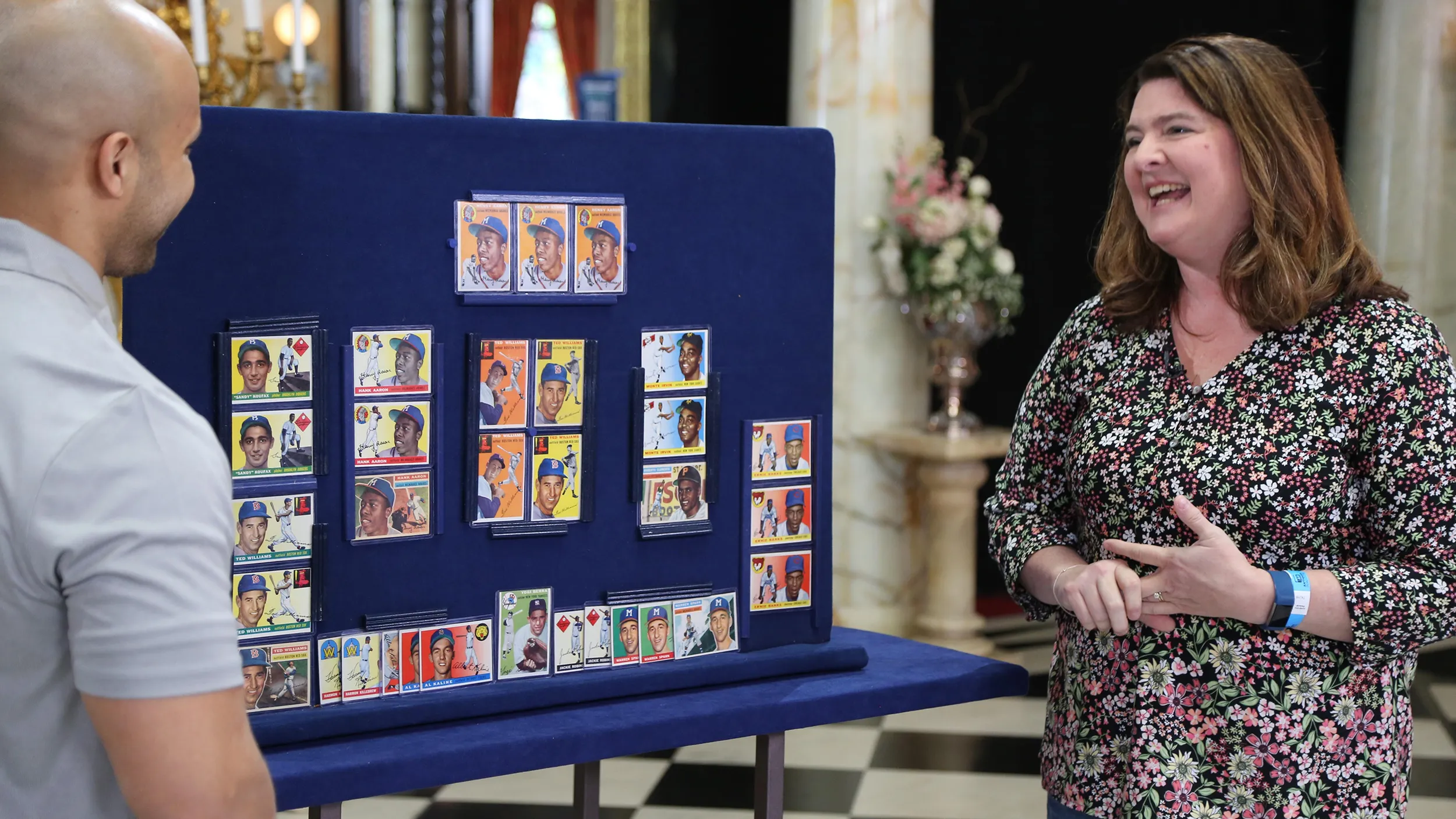GUEST: Those were my parents'. They bought them in the early '70s. My parents had kind of an Art Deco, colorful style. We lived in Baltimore. They just bought these pieces of furniture. They thought they were neat. They would not have a room in the house that was anything that was white. Everything was always colorful. So they were, always tried to stay modern, I guess.
APPRAISER: That's what these chairs are all about. This design was done by a couple, Erwine and Estelle Laverne.
GUEST: Okay.
APPRAISER: And they were a husband-and-wife team who designed modern things. Both of their families were artistic, but when they first got married, they started making handmade wallpaper, and then, by the '50s, they were the ones that came up with these designs that are based on flowers. And using the highest-technology materials at that time, Lucite, which is basically just clear plastic, and this whole group was referred to as The Invisible Group.
GUEST: Oh, I didn't know that.
APPRAISER: Yeah, some people call them ghost chairs. Mr. Laverne was quoted as saying that the chairs weren't important. They were invisible so that they wouldn't show up, that the only thing that was important in the room was people. But they came up with several different floral designs for chairs. This particular design is called "The Daffodil." They did a tulip, a jonquil. And they all were these really nice sort of flowing forms. And they're very comfortable.
GUEST: Yeah, we never really sat in them, too. They were more... They were in a den... type. And so... Yeah, with white carpet and all of that. So you never really sat in them. You just kind of looked at them.
APPRAISER: You said your parents got them in the early '70s?
GUEST: Yes.
APPRAISER: And they bought them new then. They're fabulous. The only thing that you look for in these in terms of the condition is whether or not they have any scratches, which these have very few. There's a few along the back of this one. And, really, the only thing that I would say is a condition issue is this crackled area here. Was that on there when you got them?
GUEST: No.
APPRAISER: Okay, so are they sitting in the sun or...
GUEST: They were sitting, actually, not in air conditioning for a while. So they weren't in the sun. They were in the garage for a little while.
APPRAISER: Okay, that's probably what did it. This is called the sickness. And it's all these little crackles. And that means that a serious collector would probably not go after these, because they were mass-produced, and so there's more of them out there, and a really particular collector would probably look for a perfect pair, but these are still fabulous. That's not a deal-killer from a value point of view. It's going to hurt it some, but in today's world, at auction, a pair like this would probably be
$2,500 to $3,500. You'll find a lot of examples of them for sale out there.









